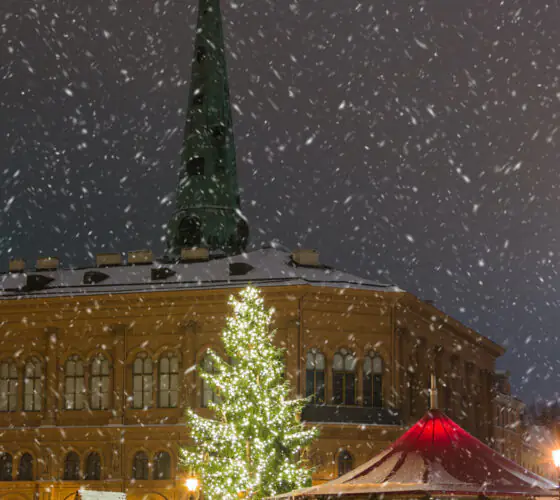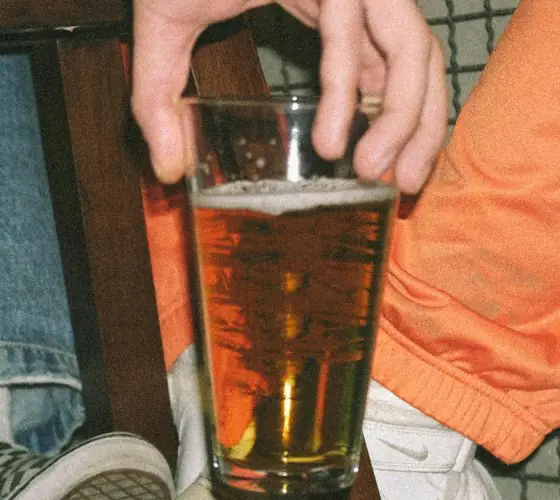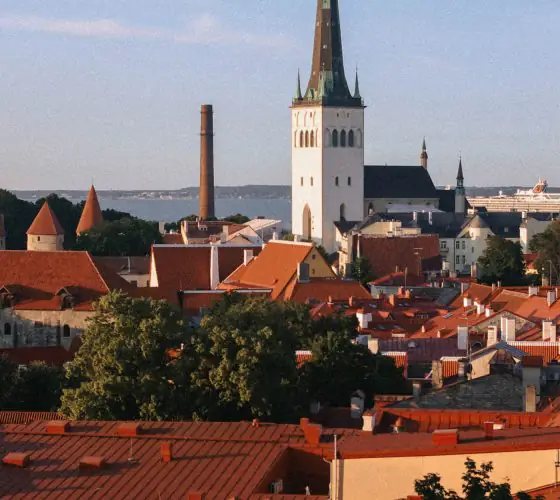
unsplash.com
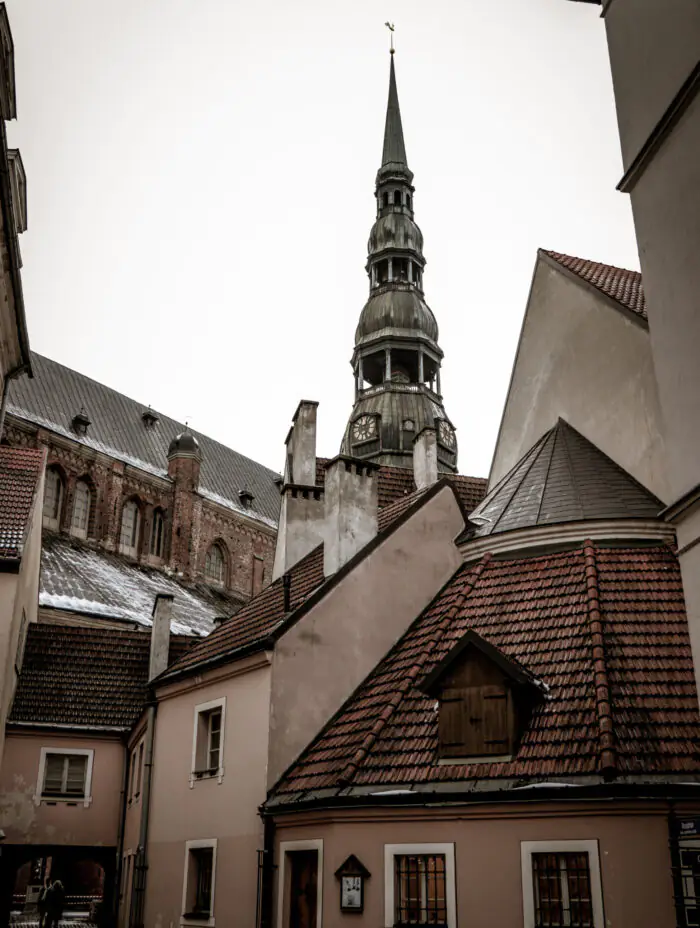
unsplash.com
Skulls and Ghosts. Burials and mystical tales
Old Riga literally stands on bones. There were active cemeteries next to each church located here until the 18th century. Some of the best archaeologists were able to research the cemetery around the Dome Cathedral, founded in 1211. According to the skulls it was estimated that around five thousand bodies rested there.
Today scientists know at least eleven medieval cemeteries on the territory of Old Town. Cemeteries moved behind the walls of Riga in early 1770s by demand of Catherine II. Another plague wave came to the territory of the Russian Empire, so the Empress prohibited any burials near churches.
So, there’s nothing to be surprised about if you see a ghost or two wandering around. People say that in the building of Museum of the History of Riga and Navigation at Palasta Street 4 a certain ghostly gentleman nicknamed Red Cardinal – without a head, but in a red velvet cloak – inhabits the building. In the Swedish Gate on Torņa Street one may occasionally notice a girl in long white dress. According to legend, the young lady fell in love with a young man who lived outside the city walls. Exhausted with love, she ignored the quarantine that was declared during plague, secretly opened the gates to sneak out for a hot date. But the breach of the lockdown was noticed so the poor girl was embedded in the city wall as punishment.And on the second floor of Riga Castle, built back in the 14th century, there is “Dorothea’s Room”. For a long time, the only portrait in it was a picture of an enchanting widow of the same name – Dorothea of Courland. Now there are other portraits on display here, showing Dukes of Courland. According to rumors, Dorothea doesn’t like it so every night she pranks and messes with the rest of the paintings. The rumor is that every morning castle employees must fix them so they would hang straight. You can see the castle, located at Pils Square 3, probably only from the outside, but there is a virtual tour. Unfortunately, virtual paintings in Dorothea’s room are hanging just bit too flat.
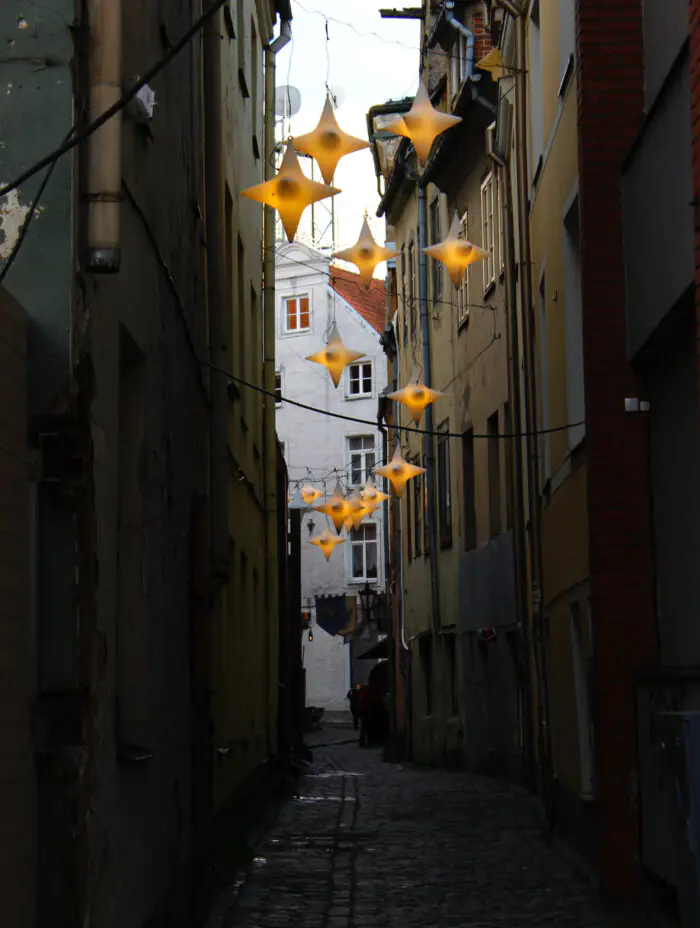
unsplash.com
Rīdzene River. Only the name left.
There are many versions of how Riga got its name. One of them is that it came from river of Riga or Rīdzene, which used to be flowing through territory of the Old Town. Going further into river Daugava between Stone and Railway bridges. At one time there was a big lake at its delta where Riga port was situated. On the river Rīdzene, ships could reach at least the area of what is known today as Zirgu street.
The river began gradually disappearing in the beginning of 17th century, when some of its waters were diverted into new defensive ditches. It also became shallow because of local citizens throwing everything they could into it. A little later Rīdzene was purposefully dammed due to it being narrow, almost standing and smelly in beginning of the XVIII century. Disturbing aesthetics and health of locals. Last sections of the river were eliminated in the middle of nineteenth century.
You can imagine its waters by walking along the six-lane section of January 13th Street – apparently it flowed about here and was at least as wide. Another section of former riverbed is just as easy to recognize – it’s Rīdzene Street, including the glass-covered structure of Galerija Centrs shopping center (imagine being under water). Then Rīdzene tiled along what is now Līvu Square too. To honor this river, wavy flowerbeds and pictures on the paving stones were arranged there. On this very square, archeologists in previous century found remains of a sunken ship, which confirmed the version of an active navigation. The Powder Tower and building of Ministry of Education and Science on Vaļņu Street are also standing on the riverbed of river Rīdzene. Its bank continues beyond the borders of Old Town and turns to Bastion Hill. It is known that the riverbed leads up to the place where Orthodox Cathedral now stands. Builders of the XIX century cathedral exceeded the estimate, because additional strengthening of the base was necessary – the church turned out unstable due to water flowing underground.
To this day there are places in Old Riga where houses tend to sag constantly and basements get flooded. Just another reminder of river Rīdzene.
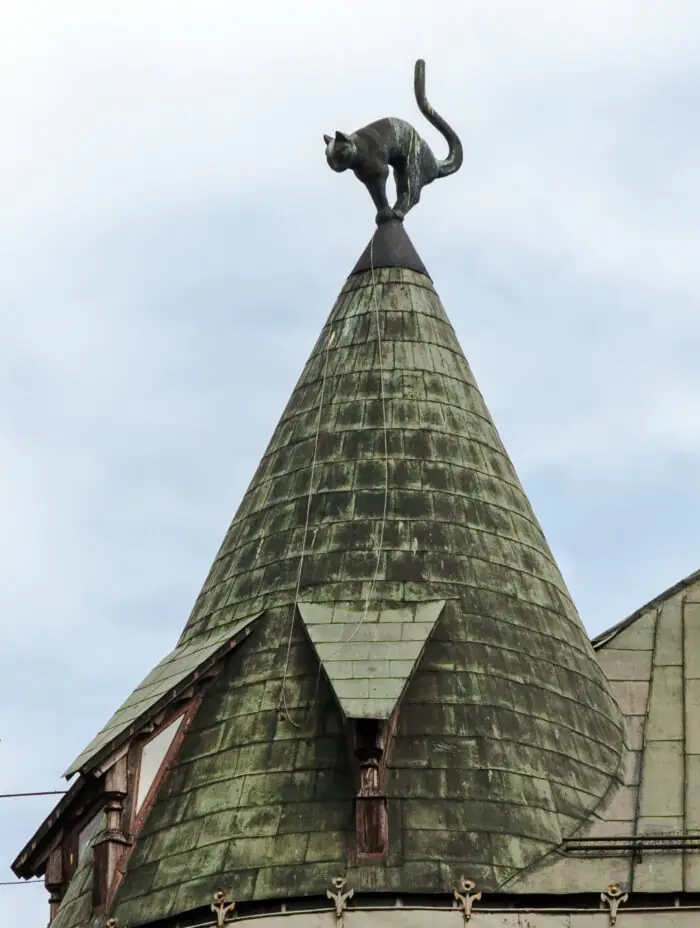
rutravel.net
The Cat’s House. The audacity that went down in history
Near Liv Square stands a house at Meistaru Street 10. The towers of this building, which was built in 1909 by a wealthy merchant in Riga, are crowned by two black cats with perky tails. Rumor has it that the businessman who constructed this building was not accepted into the Great Guild of Merchants. He took offense – and turned the cats on his new house with their tails toward the Great Guild building standing nearby.

rutravel.net
There was a scandal and even a lawsuit. As a result, cat which was closer to the guild had to be turned the other way. According to another version, same merchant was for some reason angry with Riga City Council, whose building was also located in the direction of cat’s tail.
Church roosters. A talisman and a stock prediction
The most notable spires of Old Riga’s churches are crowned golden cockerels instead of crosses. If you don’t feel sorry for your neck, check out the tops of Riga Dome Cathedral, St. Jacob’s Cathedral, St. Peter’s and St. John’s Churches. According to legend, roosters protect the city from evil forces – devils are scared of roosters’ singing so they avoid these places.
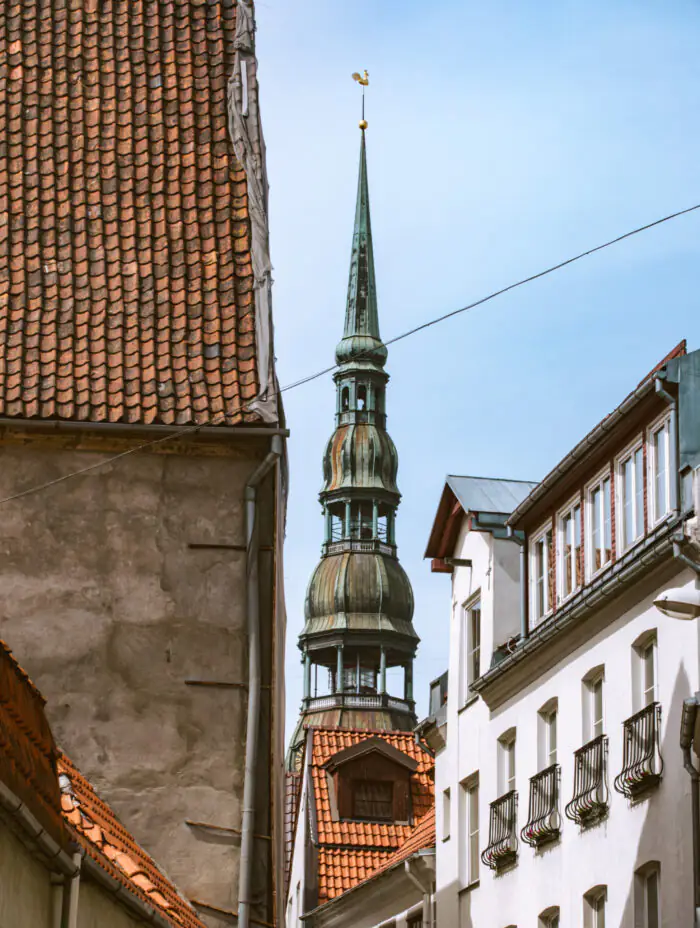
unsplash.com
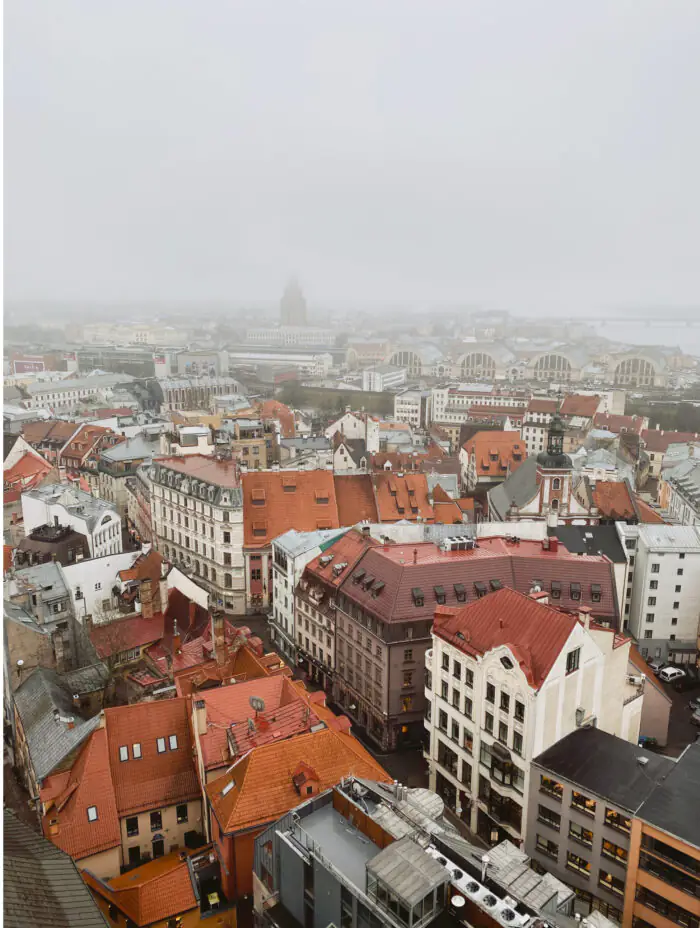
unsplash.com
Another legend says that the rooster on the Riga Dome Cathedral used to be painted in gold on one side and black on the other. Rooster would turn its golden side toward the city when the wind helped ships enter the delta of the Daugava River, portending a good trade. If it turned with its black side, the townspeople knew it’s time to split up, trade ships are not worth waiting for in near future.
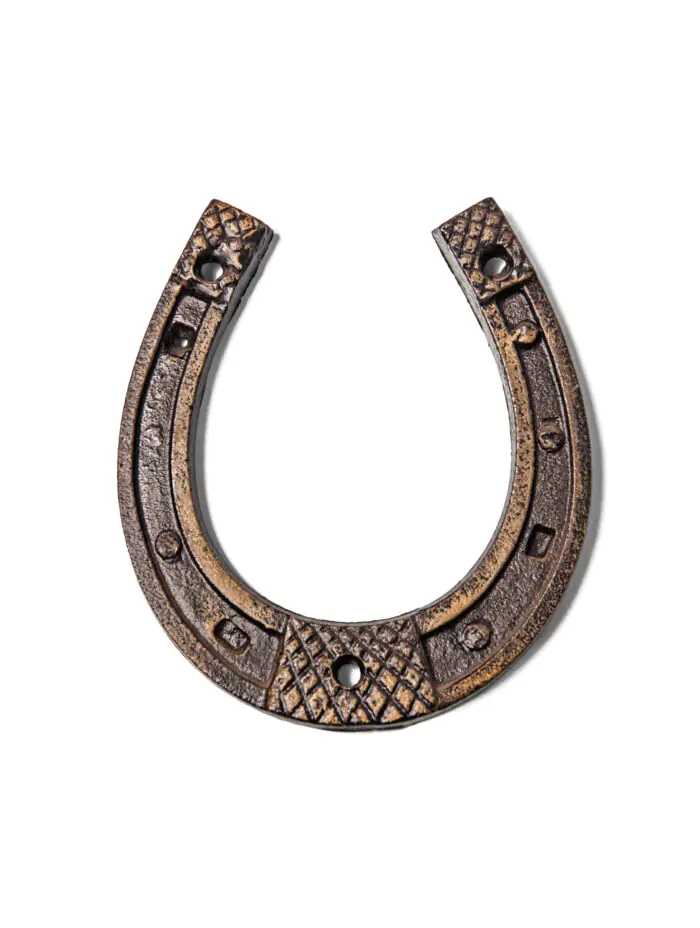
Royal Horseshoe. Horseshoe, Carl.
Facade of the house on Kaļķu Street 20 on the third-floor level is decorated with a horseshoe. According to one version it fell off the horse of Swedish King Charles XII when he was passing through Riga. Another legend tells that it’s from horse of Peter the Great. They say that when the horseshoe fell off, Peter looked into the neighboring house to find a blacksmith. And while horse was being re-shoed, Peter kept twisting the horseshoe in his hands. When it was time to leave, he threw it over his shoulder, thus getting it stuck against the freshly painted facade. According to another version, horseshoe flew into one of the windows.

Building now houses the elegant Relais le Chevalier and its management obviously loves the legend. They say it doesn’t matter which monarch pinned the horseshoe to the facade, they haven’t touched anything, and it’s been hanging there for three centuries.
However, if you look at photos taken by Google Maps in 2014 when the building was empty, it is clearly visible that no horseshoe was embellishing the facade then. It must have been stored in a safe during time of repairs.
Underground Riga. Giant moles and the unbuilt metro.
One of the most fascinating legends about the Old Town is that for centuries, locals have been building a network of cellars and underground passageways beneath it.
In the Middle Ages, residents of Riga are believed to have bred huge moles, up to the size of a pig. These beasts were able to dig tunnels large enough for humans to enter. However, as time progressed, owners began to get attacked due to the tunnel network threatening the stability of buildings.
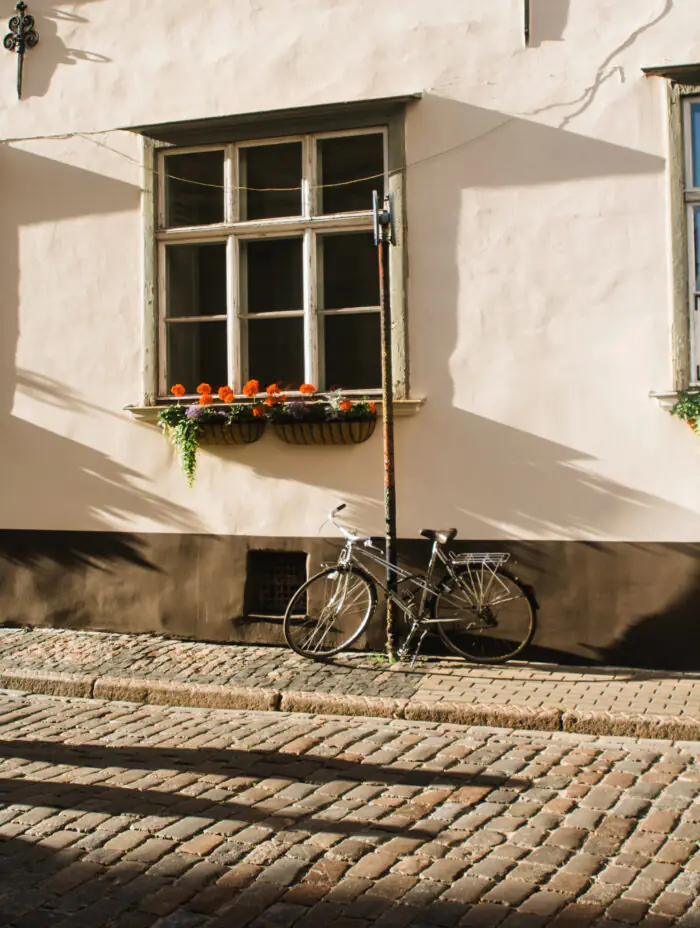
unsplash.com
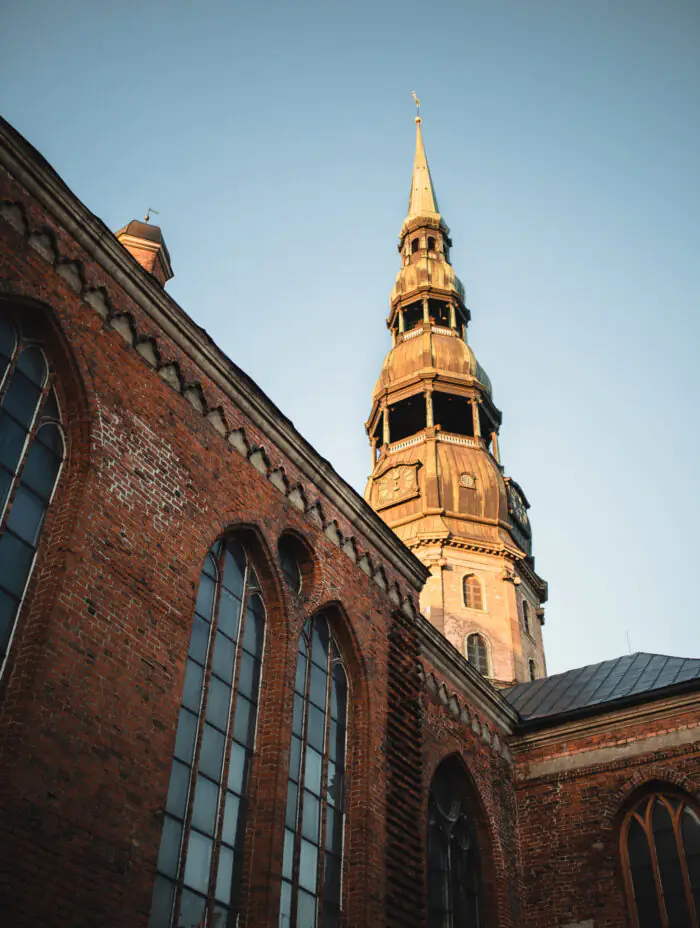
unsplash.com
It is said that during the reign of Kārlis Ulmanis (1930s), some of the cellars and passages were used to hide untold wealth in them. In Soviet times, idea of building a subway in Riga was abandoned in order to preserve the secret underground network. Legend goes that one of the exits from the underground city is located somewhere on Bastion hill. Good luck finding it!

